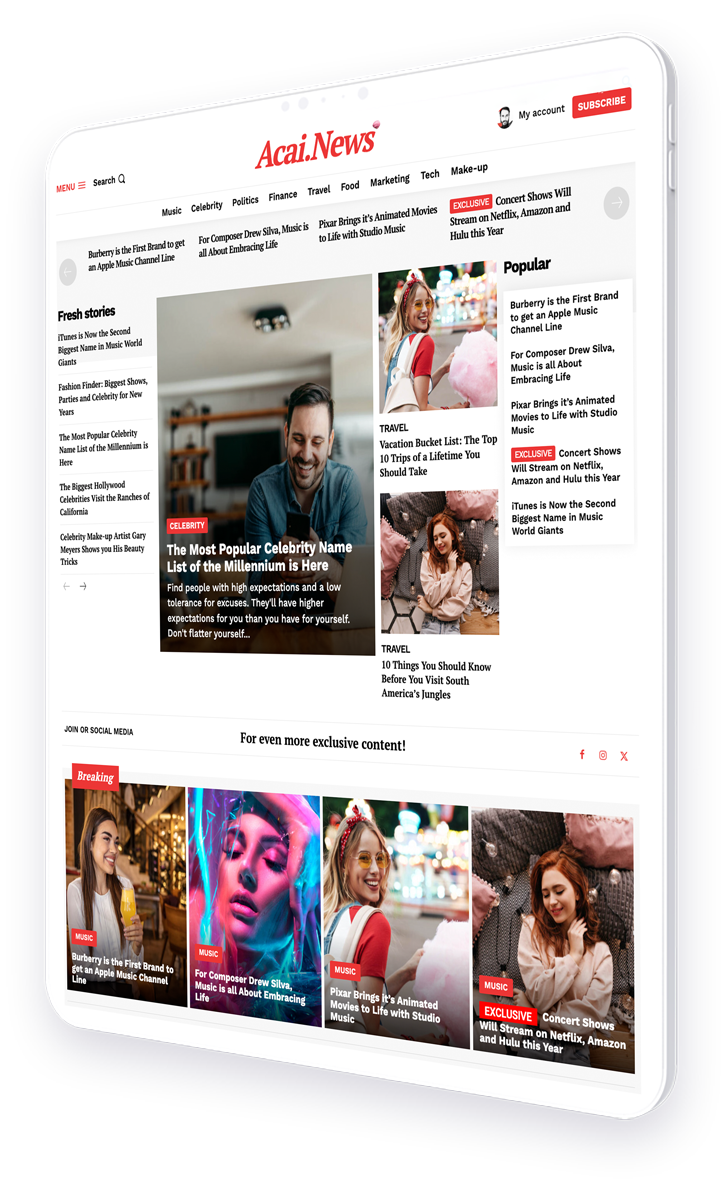Why brands should move beyond traditional blogs and adopt long-form magazine-style content to establish thought leadership
In the digital age, content is king. However, the type of content that reigns supreme is evolving. While traditional blogs have been a staple for brands looking to engage with their audience, the landscape is shifting towards more sophisticated, long-form content. Enter the corporate magazine—a powerful tool for establishing thought leadership and boosting brand authority. This article explores why brands should move beyond traditional blogs and adopt magazine-style content to enhance their market presence.
The Limitations of Traditional Blogging
Blogs have been the go-to medium for brands to share insights, updates, and engage with their audience. However, as the digital space becomes more crowded, the limitations of traditional blogging are becoming apparent.
- Oversaturation: With millions of blogs published daily, standing out in the blogosphere is increasingly challenging.
- Short Attention Spans: Readers often skim through blog posts, missing out on deeper insights.
- Lack of Depth: Blogs typically offer quick takes rather than in-depth analysis, which can limit their impact.
While blogs are excellent for quick updates and engaging content, they often fall short in establishing a brand as a thought leader in its industry.
Why Corporate Magazines Are the Future
Corporate magazines offer a unique opportunity for brands to delve deeper into topics, showcase expertise, and engage with their audience on a more meaningful level. Here’s why they are becoming an essential tool for brands:
1. Establishing Thought Leadership
Corporate magazines allow brands to explore topics in greater depth, providing comprehensive insights and analysis. This positions the brand as an authority in its field, fostering trust and credibility among its audience.
For instance, Adobe’s CMO.com is a prime example of a corporate magazine that has successfully established thought leadership. By offering in-depth articles, interviews, and research reports, Adobe has positioned itself as a leader in digital marketing insights.
2. Enhanced Storytelling
Magazines provide a platform for brands to tell their stories in a more engaging and visually appealing manner. With the use of high-quality images, infographics, and multimedia elements, brands can create a richer narrative that resonates with their audience.
Consider Red Bull’s The Red Bulletin, which combines stunning visuals with compelling stories to engage its audience. This approach not only captures attention but also reinforces Red Bull’s brand identity as a lifestyle brand.
3. Building a Loyal Community
Corporate magazines can foster a sense of community among readers by offering exclusive content, insights, and opportunities for interaction. This helps build a loyal audience that values the brand’s expertise and insights.
For example, American Express’s Departures magazine targets its premium cardholders with exclusive travel and lifestyle content, creating a sense of exclusivity and community among its readers.
Case Studies: Brands That Have Successfully Transitioned
Several brands have successfully transitioned from traditional blogging to corporate magazines, reaping significant benefits in terms of brand authority and audience engagement.
1. Airbnb’s Pineapple Magazine
Airbnb launched Pineapple magazine to offer a deeper dive into travel experiences and cultural insights. By focusing on storytelling and high-quality visuals, Airbnb has strengthened its brand identity and engaged its audience on a more personal level.
2. IBM’s Industry Magazines
IBM has launched several industry-specific magazines, such as IBM Systems Magazine, to provide in-depth insights and analysis on technology trends. This approach has positioned IBM as a thought leader in the tech industry, enhancing its brand authority.
Statistics Supporting the Shift to Corporate Magazines
Research and statistics further underscore the benefits of adopting a corporate magazine approach:
- Increased Engagement: According to a study by the Content Marketing Institute, long-form content generates 77% more backlinks than short articles, indicating higher engagement levels.
- Higher Conversion Rates: A report by Demand Metric found that content marketing, including magazines, generates three times as many leads as traditional marketing while costing 62% less.
- Improved Brand Perception: A survey by Edelman found that 63% of consumers trust content from a brand more than traditional advertising, highlighting the importance of authoritative content.
How to Transition from Blogging to a Corporate Magazine
Transitioning from traditional blogging to a corporate magazine requires careful planning and execution. Here are some steps to consider:
1. Define Your Objectives
Clearly outline the goals you want to achieve with your corporate magazine. Whether it’s establishing thought leadership, increasing brand awareness, or engaging with a specific audience, having clear objectives will guide your content strategy.
2. Identify Your Target Audience
Understanding your audience is crucial for creating content that resonates. Conduct market research to identify your target audience’s preferences, interests, and pain points.
3. Develop a Content Strategy
Create a comprehensive content strategy that outlines the topics, formats, and distribution channels for your magazine. Consider incorporating a mix of articles, interviews, case studies, and multimedia content to keep your audience engaged.
4. Invest in Quality Design and Production
The visual appeal of your magazine is critical in capturing and retaining your audience’s attention. Invest in high-quality design and production to create a visually stunning publication that reflects your brand’s identity.
5. Promote Your Magazine
Leverage various marketing channels to promote your magazine and reach a wider audience. Utilize social media, email marketing, and partnerships to increase visibility and drive traffic to your publication.
Conclusion: The Future of Brand Authority
As the digital landscape continues to evolve, brands must adapt their content strategies to stay ahead. Corporate magazines offer a powerful platform for brands to establish thought leadership, engage with their audience, and enhance their brand authority. By moving beyond traditional blogs and embracing long-form, magazine-style content, brands can create a lasting impact in their industry.
In conclusion, the shift towards corporate magazines is not just a trend but a strategic move for brands looking to differentiate themselves in a crowded market. By investing in high-quality, in-depth content, brands can build trust, foster loyalty, and ultimately drive business success.
For more insights on content marketing strategies, visit the Content Marketing Institute.




